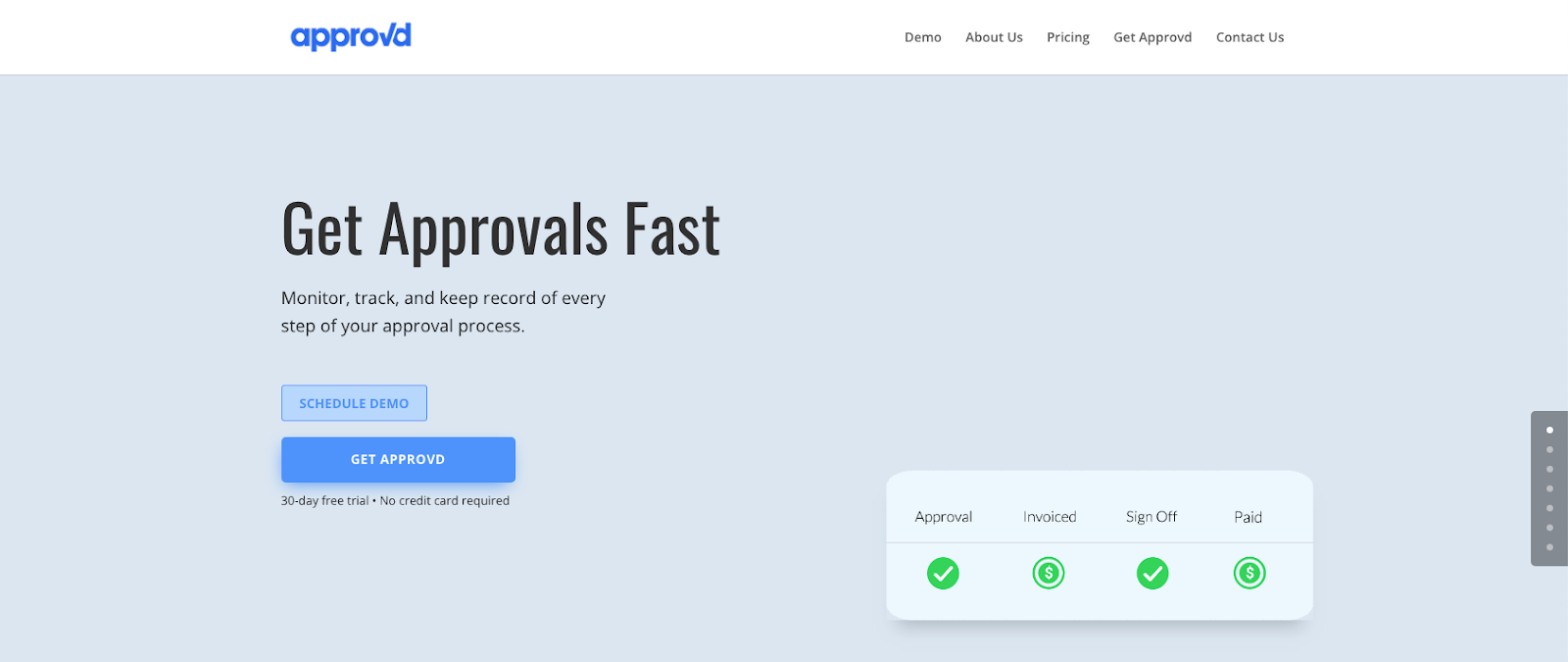Recent Posts
*Image source: https://docs.cypress.io/guides/overview/why-cypress
*Image source: https://docs.cypress.io/guides/overview/why-cypress
Confession: we know some people who used to work in agencies who became the clients who had to be nagged to “do their homework.” After all the effort that goes into finding the right help, signing the agreement and letting the agency get to work feels like a great time to get back to everything else on your plate.
Confession: we know some people who used to work in agencies who became the clients who had to be nagged to “do their homework.” After all the effort that goes into finding the right help, signing the agreement and letting the agency get to work feels like a great time to get back to everything else on your plate.
If you think about it, a discovery call is a bit like a first date: both parties are putting their best selves forward and seeing if they have enough in common to keep going. And, just like a first date, it’s easy enough to set up. Unlike a first date, however, a quick Google search (or are we chatGPT-ing exclusively now) of the other person isn’t necessarily enough. There are five areas of a discovery call conversation that an agency will typically cover. If you can put some notes together on each area ahead of time, you’ll be in a stronger position to assess the agency you’re meeting.
If you think about it, a discovery call is a bit like a first date: both parties are putting their best selves forward and seeing if they have enough in common to keep going. And, just like a first date, it’s easy enough to set up. Unlike a first date, however, a quick Google search (or are we chatGPT-ing exclusively now) of the other person isn’t necessarily enough. There are five areas of a discovery call conversation that an agency will typically cover. If you can put some notes together on each area ahead of time, you’ll be in a stronger position to assess the agency you’re meeting.
Sprint retrospectives are an essential aspect of Agile development, offering a platform for teams to reflect and flourish. This guide will shed light on some effective ways to conduct retrospectives, ensuring they are not just routine meetings, but catalysts for continuous team improvement. As a key element of Agile practices, sprint retrospectives are more than just discussions — they're opportunities for growth and learning.
Sprint retrospectives are an essential aspect of Agile development, offering a platform for teams to reflect and flourish. This guide will shed light on some effective ways to conduct retrospectives, ensuring they are not just routine meetings, but catalysts for continuous team improvement. As a key element of Agile practices, sprint retrospectives are more than just discussions — they're opportunities for growth and learning.
What is Cypress?
Cypress, an open-source tool, streamlines web application testing with its real-time execution feature. This enables developers to actively observe and engage with tests as they occur, offering a unique interactive experience. Primarily focusing on user interface testing, Cypress stands out for its straightforward and user-friendly syntax. It's versatile, supporting a range of tests including end-to-end, component, integration, and unit tests, making it a comprehensive solution for developers looking to ensure their web applications perform as expected.
What is Cypress?
Cypress, an open-source tool, streamlines web application testing with its real-time execution feature. This enables developers to actively observe and engage with tests as they occur, offering a unique interactive experience. Primarily focusing on user interface testing, Cypress stands out for its straightforward and user-friendly syntax. It's versatile, supporting a range of tests including end-to-end, component, integration, and unit tests, making it a comprehensive solution for developers looking to ensure their web applications perform as expected.
Navigating the Uncertain Waters of Software Development
When it comes to Agile/Scrum in software development, there's one concept that stands out as a guiding principle in the initial stages of project management: the Cone of Uncertainty. This concept helps teams grasp the evolution of uncertainty throughout a project's lifecycle. In this blog, we'll explore what the Cone of Uncertainty is and why it's important in Agile/Scrum. We’ll discuss how it can be useful in decreasing uncertainty and help achieve more accurate estimates, assist in risk management, and determine expectations for a given project.
Navigating the Uncertain Waters of Software Development
When it comes to Agile/Scrum in software development, there's one concept that stands out as a guiding principle in the initial stages of project management: the Cone of Uncertainty. This concept helps teams grasp the evolution of uncertainty throughout a project's lifecycle. In this blog, we'll explore what the Cone of Uncertainty is and why it's important in Agile/Scrum. We’ll discuss how it can be useful in decreasing uncertainty and help achieve more accurate estimates, assist in risk management, and determine expectations for a given project.
The Power of Scrum Principles
Scrum is a framework in project management that thrives on embracing uncertainty and creativity. It is structured around the process of learning from past work and determining how to continuously improve while moving forward. Scrum’s power is in its simplicity. It encourages teams to zero in on delivering what's most valuable without getting lost in complexity. Designed for flexibility, Scrum helps teams adapt to shifts in conditions and user needs. This framework — and adhering to the six key Scrum principles — incorporates re-prioritization as a built-in feature and employs quick release cycles, ensuring your team is always in a state of learning and improvement.
The Power of Scrum Principles
Scrum is a framework in project management that thrives on embracing uncertainty and creativity. It is structured around the process of learning from past work and determining how to continuously improve while moving forward. Scrum’s power is in its simplicity. It encourages teams to zero in on delivering what's most valuable without getting lost in complexity. Designed for flexibility, Scrum helps teams adapt to shifts in conditions and user needs. This framework — and adhering to the six key Scrum principles — incorporates re-prioritization as a built-in feature and employs quick release cycles, ensuring your team is always in a state of learning and improvement.
Introduction
If you've ever needed to translate a document from English into another language, you understand the importance of getting the translation right. The accuracy of your translation can significantly impact your business endeavors, potentially opening up new markets or sealing critical business deals. While professional human translation is often the gold standard for important documents, machine translation, such as Google Translate, can be a handy tool for quick translations. In this blog, we'll explore the differences, benefits, and drawbacks of Google Translate and localization.
Introduction
If you've ever needed to translate a document from English into another language, you understand the importance of getting the translation right. The accuracy of your translation can significantly impact your business endeavors, potentially opening up new markets or sealing critical business deals. While professional human translation is often the gold standard for important documents, machine translation, such as Google Translate, can be a handy tool for quick translations. In this blog, we'll explore the differences, benefits, and drawbacks of Google Translate and localization.
The Benefits and Disadvantages of Fast Development
In the world of software development, the speed of development plays a critical role. Clients seeking solutions to their problems often want them delivered quickly and cost-effectively.
The Benefits and Disadvantages of Fast Development
In the world of software development, the speed of development plays a critical role. Clients seeking solutions to their problems often want them delivered quickly and cost-effectively.
Originally presented at SoFloDevCon 2022, this article explores different strategies internal and external teams can use to communicate budgets and roadmaps to stakeholders.
Originally presented at SoFloDevCon 2022, this article explores different strategies internal and external teams can use to communicate budgets and roadmaps to stakeholders.
The SilverLogic has grown dramatically as an agile software development company over the past several years. Now 10 years old and with almost 60 members, we faced the question: how do we —the organization—introspect, course-correct, and learn at scale? A company-wide retrospective is unfeasible, and surveys only take us so far.
The SilverLogic has grown dramatically as an agile software development company over the past several years. Now 10 years old and with almost 60 members, we faced the question: how do we —the organization—introspect, course-correct, and learn at scale? A company-wide retrospective is unfeasible, and surveys only take us so far.







